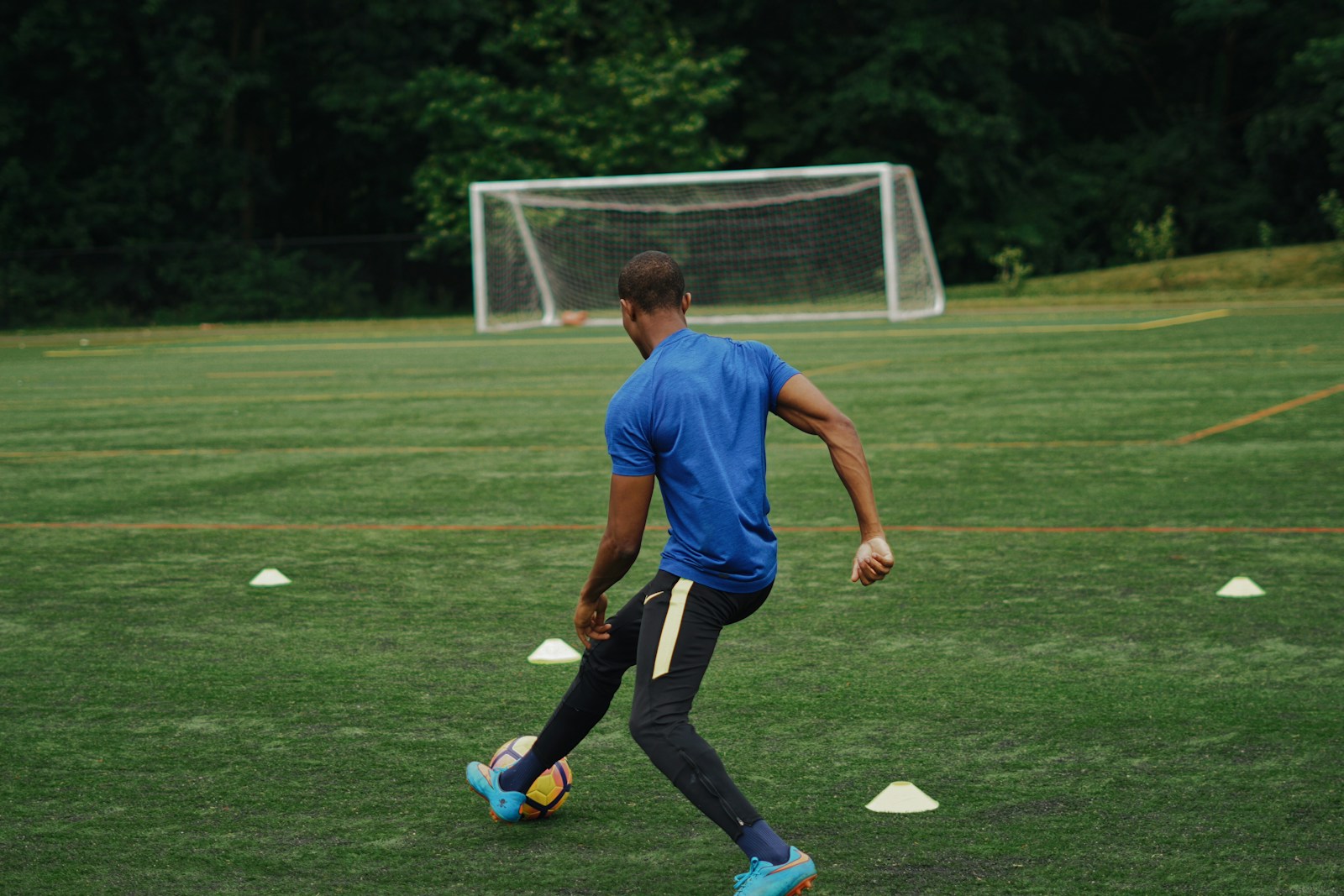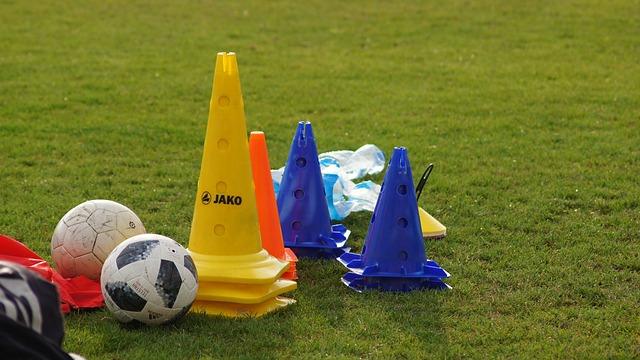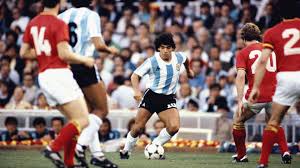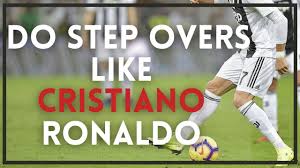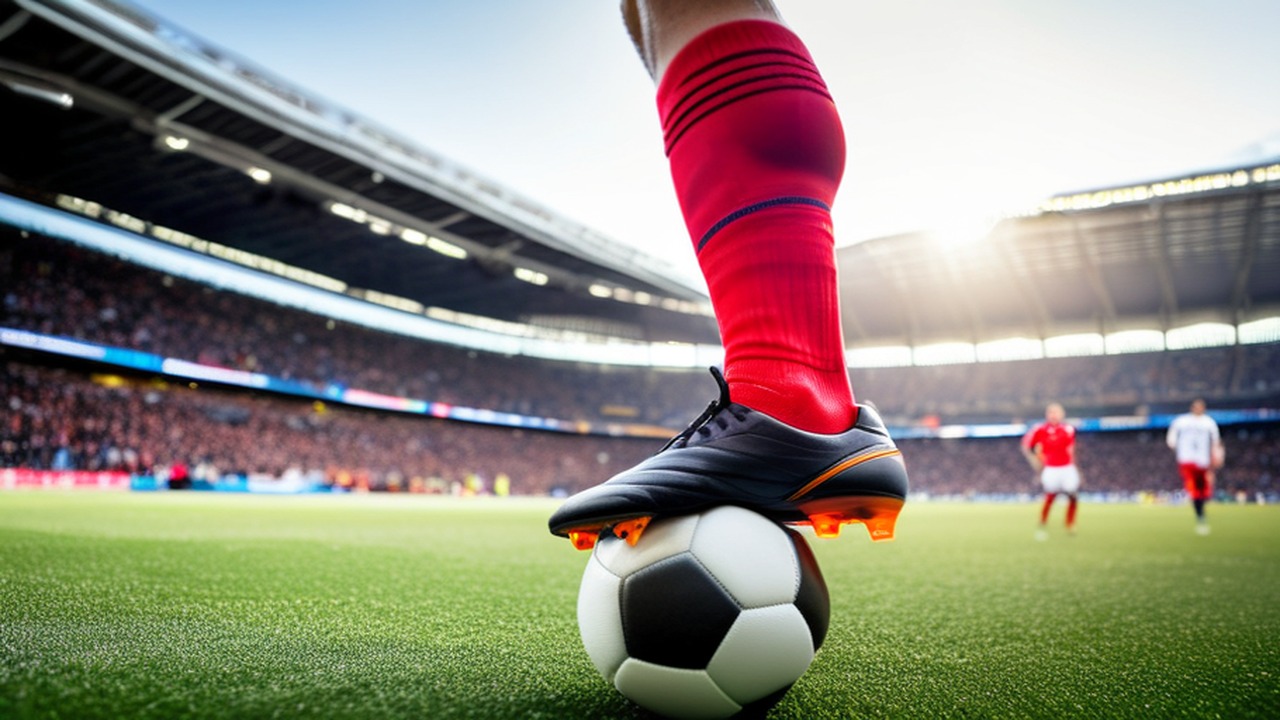Master the Knuckleball: Learn How to Take A Free Kick Like Cristiano Ronaldo
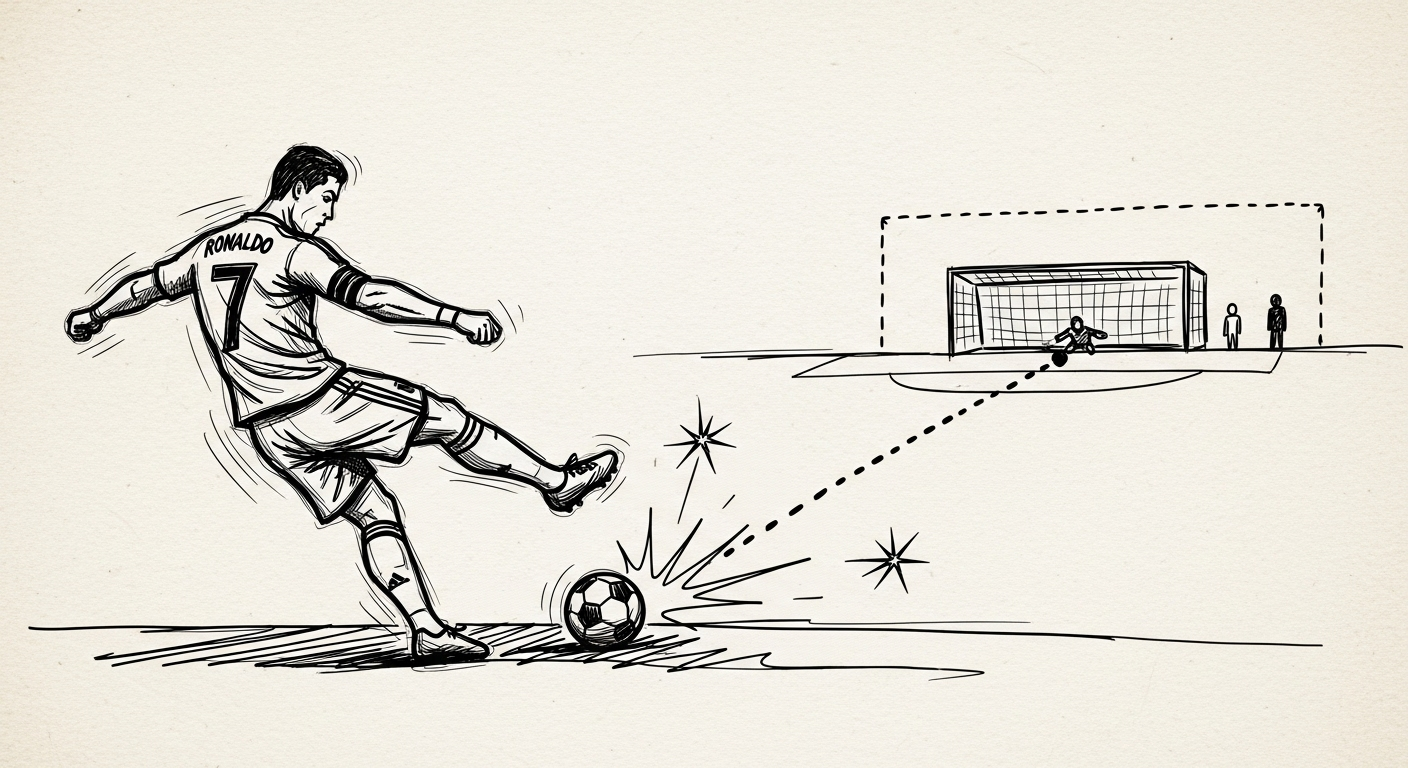
Master the Knuckleball: Learn How to Take Free Kicks Like Cristiano Ronaldo
Meta Description
Dream of scoring like Cristiano Ronaldo? Learn the secrets to his legendary knuckleball free kick! This guide breaks down the techniques, science, and drills to boost your game.
Introduction:
Ever watched a free kick, the ball hanging in the air, then suddenly *boom* – back of the net? Heart-stopping, isn’t it? While football history boasts its share of set-piece wizards, one name, one technique, truly stands apart: Cristiano Ronaldo’s knuckleball. It’s legendary.
It’s a ghostly, unpredictable flight that leaves keepers utterly bamboozled and fans gasping. Forget bending it like Beckham for a moment; we’re talking about blasting it like CR7. So, you’ve dreamt of that?
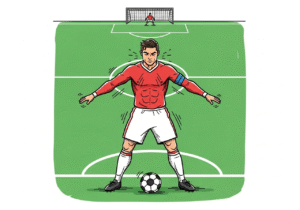
You’re in precisely the right place, my friend. We’re about to peel back the layers on Ronaldo’s iconic knuckleball, giving you the step-by-step blueprint to seriously elevate your own free-kick game.
The Art of the Free Kick, Ronaldo Style
Look, a free kick isn’t just some boring set-piece; it’s a canvas for pure, individual genius, a fleeting chance for one player to rewrite a match’s entire narrative. We’ve seen the artistry: Juninho’s laser precision, Beckham’s graceful curl. Football’s history books are packed with these sorcerers of the dead ball. But then came Ronaldo.
He didn’t just carve out a niche; he blasted a canyon through traditional technique. He threw the rulebook out the window. Rather than bending it with spin, his method ruthlessly strips it away, conjuring that wild, unpredictable flight – the “knuckle” that makes the ball dance like a phantom.
We’re not just going to show you *how* he does it; we’re diving deep into *why* it works, fundamentally changing how you think about striking a ball. Get ready.
If you want more soccer articles, fixtures, and predictions, get them here for free
Understanding the Ronaldo Knuckleball Free Kick: Science and Precision
What is a Knuckleball?
Alright, so what exactly *is* this “knuckleball” everyone talks about? Simply put, it’s a shot where the ball has virtually zero spin. None. This isn’t just a minor detail; it’s the whole ball game.
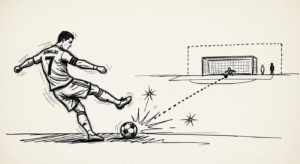
Without that steady rotation, the ball becomes a chaotic ballet, a wild, almost desperate thing in the air, susceptible to every tiny gust and current.
It swerves. It dips. It changes direction without warning, like a ghost dodging shadows. Do you know how a baseball pitcher throws one? Same principle. Utterly baffling.
The Physics Behind the Erratic Movement
Here’s the real magic, the science bit. When a ball spins, the Magnus effect kicks in – a reliable friend that dictates its curve, making its flight predictably beautiful. But rip that spin away? Oh, things get interesting.
The air pressure surrounding the ball becomes a frenzied, constantly shifting battleground. This frantic, invisible struggle between the ball’s surface and the turbulent air creates that signature, drunken butterfly flight.
For any poor soul between the posts, it’s a nightmare. The ball seems headed one way, maybe arcing gently, then *bam!* – in those crucial final meters, it darts, dips, or swerves like a startled bird. Goalkeepers? They just can’t track it. A true terror.
Why Ronaldo’s Technique is So Effective
And that’s not even the half of it. Ronaldo didn’t just dabble; he perfected this devilish technique, turning it into something utterly lethal. His genius lay in generating colossal power while simultaneously stripping away spin. He crafted a weapon both blindingly fast and wildly unpredictable. Imagine that: a thunderbolt that also dances like a phantom!
This brutal combination of sheer velocity and that ungodly knuckleball effect gave goalkeepers precisely zero time to react. They’d stand there, often rooted to the spot, statues of despair, or scrambling into desperate, futile dives at the last possible second. What a testament to his relentless dedication. Seriously, this man lived and breathed this.
Breaking Down the Technique: A Step-by-Step Guide
To *really* get how Ronaldo strikes a free kick, you’ve got to peel back the layers, understand every tiny component. It’s not just a shot; it’s a ballet of brutal efficiency, a masterful fusion of controlled power and almost surgical contact. Let’s dig in.
The Stance: Body Positioning and Focus
Picture this: Ronaldo’s stance. It’s instantly recognizable. He paces back, typically five to seven confident steps, positioning himself slightly to the left if he’s a right-footer. His posture? Ramrod straight. Shoulders squared, locked onto that goal like a predator. He takes a deep, deliberate breath, eyes burning into the ball, then the target.
This initial setup, my friend, is non-negotiable. It’s where you build the explosive momentum, where you lock in proper alignment. And here’s the kicker: your non-kicking foot lands about a foot from the ball, pointing directly where you want that shot to sizzle. Simple. Critical.
The Run-Up: Rhythm, Pace, and Angle
Now, the run-up. Don’t think long and winding. It’s short, calculated, and absolutely *explosive*. Ronaldo takes just a few quick, almost clipped steps, gathering speed without ever, ever sacrificing control. But here’s the trick: he approaches the ball at a distinct angle, usually around 45 degrees.
Why not? Because that specific angle sets you up for the perfect sweet spot contact. The rhythm is the heartbeat of this entire motion; it must feel natural, powerfully fluid, never rushed. It isn’t about raw sprinting; it’s about harnessing power through supremely efficient movement. Pure physics in action.
The Striking Point: Foot Placement and Contact (Sweet Spot)
Okay, this is it. The Holy Grail. This is the *most* critical piece of the Ronaldo puzzle, the secret sauce. Forget laces for spin; that’s not his game. Ronaldo smashes the ball with the *inside* of his foot, but here’s the surgical precision: he uses a very specific part of his instep – often called the “knuckle” of the foot, that firm bone just above your big toe.
Seriously, aim for the dead center of the ball, or just a tiny bit below. That’s your spin-killing sweet spot. At impact, your foot must be rigid. Like a steel bar. That firm, unyielding contact is what relentlessly transfers maximum, unadulterated power directly into the ball, denying it any chance of unwanted rotation. Period.
The Follow-Through: Generating Power and Controlling Trajectory
Immediately after that thunderous contact, Ronaldo’s leg doesn’t sweep through gracefully. Oh no. It snaps forward with a whipcrack, almost *stopping* abruptly. His standing leg buckles noticeably, and his body leans back just a touch (it’s wild to watch, honestly). This isn’t a long, flowing follow-through; it’s a sharp, decisive “chop” or “stab” motion.
And this is key. That’s what strangles the spin. His arms often splay out, seeking balance in the violence. The follow-through is short, brutal, explosive – ensuring every ounce of power is slammed into the ball, without a speck of that hated, predictable rotation.
Body Balance and Core Engagement
From start to finish, throughout this whole incredible process, maintaining impeccable body balance is the bedrock. Ronaldo’s iron core is what anchors him, keeping him rock-steady even amidst that powerful, almost violent swing. You *must* engage your core muscles; they’re the silent powerhouses providing stability and transferring every possible ounce of force from your body right into that ball. It’s non-negotiable for both devastating power and pinpoint accuracy. Don’t skip core day.
Developing Power and Accuracy: Drills and Practice
Mastering Ronaldo’s free kick? It’s not just a fancy technique. It demands obsessive repetition, a body built for battle, and yes, serious physical conditioning. Ready to upgrade that accuracy? Let’s hit the drills.
Strength and Conditioning for Free Kicks
A truly powerful free kick, rockets from strong, stable legs and an iron core. Period. You need to weave exercises like squats, lunges, and calf raises into your routine. Planks, crunches – they’re non-negotiable for that rock-solid core. And for explosive power, which is absolutely vital, don’t overlook plyometrics. Box jumps? Game-changing.
Repetition is Key: Building Muscle Memory
Let’s be real for a second: Ronaldo didn’t just wake up with this magic. He *forged* it. You need sacred training sessions, solely for free kicks. Start simple, no goal even – just drill that strike and follow-through until it feels like breathing. Once it clicks, introduce a target. Relentless repetition isn’t just practice; it’s engraving that technique into your very muscle memory.
Make it natural.Target Practice: Improving Precision
Now, let’s talk precision. Get some targets in that goal – cones, bibs, maybe even mini-goals. Begin up close, then slowly, deliberately, push back as your accuracy sharpens. The obsession? Hitting that exact same spot, again and again. That’s how you hone your aim, how you forge that unshakeable consistency. It’s the absolute cornerstone of mastering free kicks.
Varying Distances and Angles
And please, for the love of the game, don’t just hammer away from one single spot! Real matches throw free kicks at you from every conceivable position, at every distance imaginable. So, hit those different angles around the penalty box. Fine-tune your run-up, adjust your power, adapt! That’s how pros prepare.
The Mental Game: Confidence, Focus, and Consistency in Football Free Kicks
Physical technique? That’s only half the story. The mental game, my friend, is the ultimate decider when pressure hits.
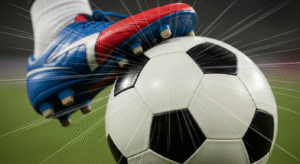
Visualization Techniques
Before you even touch that ball, close your eyes. *See* it. See the ball arcing perfectly, kissing the net, feel the contact, imagine the roar. This mental rehearsal isn’t some fluff; it can truly unleash your confidence and sharpen your focus like a razor.
Maintaining Composure Under Pressure
Game-time free kicks? They come with mind-bending pressure. So, practice when you’re dog-tired. Practice under ‘friendly fire’ from your teammates. Learn to surgically block out every single distraction, lock your gaze solely on that ball and *your* flawless technique. Nothing else matters.
Learning from Mistakes
Look, not every kick will be a masterpiece. It won’t. So, when it goes wrong, dissect it. Honestly. Was your contact off? Did you rush that run-up? Treat every single ‘failure’ as a priceless learning opportunity, a chance to sharpen your approach for the next, inevitable attempt.
Common Mistakes to Avoid When Taking Free Kicks
Even with the best intentions, trying to channel your inner Ronaldo can lead straight into some frustrating pitfalls. Let’s make sure you dodge them.
Over-Hitting the Ball
Trying to hulk-smash the ball with every ounce of your being? That usually just annihilates your control and torpedoes your accuracy. Forget mindless power. Concentrate on surgical contact, on a controlled, powerful swing. Precision beats raw strength, every single time.
Incorrect Foot Contact
Whacking the ball with the top of your laces? That’s a surefire way to generate unwanted curl. No, no. You *must* strike it with that distinct ‘knuckle’ of your foot, firm, flat, and uncompromising.
Lack of Follow-Through
Yes, Ronaldo’s follow-through is brief, but don’t mistake that for absence. It’s a decisive, controlled snap. A complete lack of *any* follow-through? That’ll give you nothing but flaccid attempts. Make sure your leg snaps *through* the ball, with clear, undeniable purpose.
Poor Body Balance
Let your balance wobble during the run-up or strike, and you’ll sabotage both your power and your direction. Simple as that. You need that stable stance. You need that core engaged, relentlessly, throughout the entire motion.
Practice Like a Pro: Your Training Regimen
To truly hardwire this technique into your game, to make it second nature, you need a dedicated, no-excuses training regimen.
Weekly Free-Kick Sessions
Carve out 30-60 minutes, once or twice a week, as sacred time, exclusively for free-kick practice. Quality trumps quantity, always. Aim for 20-30 *perfectly* executed kicks each session.
Integrating Technique into Regular Training
Even amidst the chaos of regular team practice, sniff out those golden opportunities to sharpen your technique. Free kick during a scrimmage? *Volunteer*. Every single time. The more you hone this in game-like situations, the more unstoppable you’ll become.
Analyzing Your Own Soccer Free Kick
And this is huge: if you can, record yourself. Seriously. Watching your technique back, frame by frame, can reveal subtle flaws – ghosts in the machine – that you’d never spot otherwise. Then compare your form side-by-side with Ronaldo’s. Pinpoint those breakthroughs.
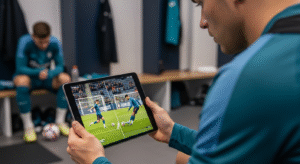
FAQ
Q: Is the knuckleball harder to learn than a curling free kick?
A: Yes, many players find the knuckleball harder to master because it requires very specific, spin-free contact, which goes against natural kicking instincts. A bending free kick relies on spin, which is often easier to generate consistently.
Q: How often should I practice my Ronaldo free kick?
A: Aim for 1-2 dedicated free-kick sessions per week, each lasting 30-60 minutes. Focus on quality over quantity, performing 20-30 perfect strikes per session. Consistency is more important than long, infrequent sessions.
Q: What type of ball is best for practicing the knuckleball?
A: Any good quality, well-inflated match ball will work. Some players feel that slightly lighter balls or those with smoother surfaces might ‘knuckle’ more easily, but mastering the technique means you should be able to do it with any regulation football.
Q: Can I use this technique for shots during open play, not just free kicks?
A: Absolutely! While most famous for free kicks, the knuckleball strike can be used in open play for long-range shots. It’s less common because the setup is harder in a fast-moving game, but when done right, it can be devastating.
Conclusion: Unlock Your Inner Ronaldo
So, what’s the bottom line here? Learn to strike a free kick like Cristiano Ronaldo? It’s a beast of a challenge, no doubt, but oh, the mind-blowing payoff! It screams for patience, demands unwavering dedication, and a commitment to endlessly sharpening your technique. You get the science behind that wicked knuckleball. You obsessively drill every single step of his iconic method.
You fortify your mental game. Do all that, and you will absolutely *catapult* your free-kick ability. Remember this: even the legend himself, Cristiano Ronaldo, started from scratch. He put in the work. And with that same relentless effort, you too can unleash the raw power and maddening unpredictability of the knuckleball, leaving goalkeepers gaping in disbelief.
So, what are you waiting for? Grab a ball. Find a goal. Your next spectacular, jaw-dropping free-kick moment? It awaits!
Check more free kick analysis on our AI SOCCER ANALYST Here
